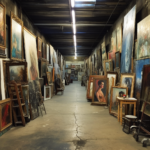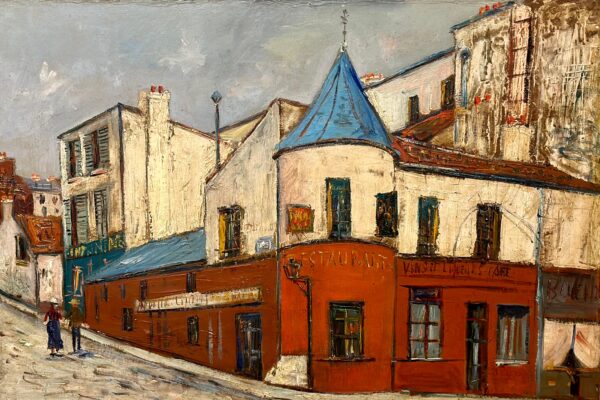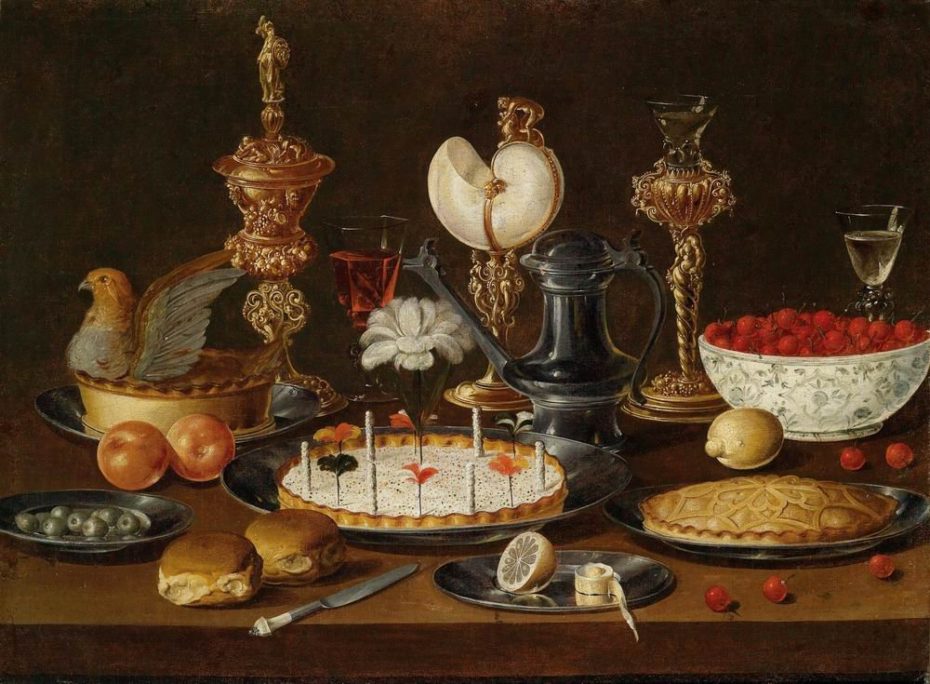
Artus Claessens, 17th Century
Still-lifes make delicious little voyeurs out of all of us. No matter the era to which they belong, they always give us the sense that we’re spying on a table set for a night of romance, gluttony, or a secret rendez-vous; a clandestine scene where only the finest cornucopia of treats will do, or a party in another dimension where the wine overfloweth. For most of us, the fantasy stops there, but what if we told you there was a secret meaning to that chalice of sweet berry wine? Or that butterfly poised so deftly on a biscuit? Today, we’re decoding the secret language of still-life paintings to uncover what they’ve been trying to tell us all along…
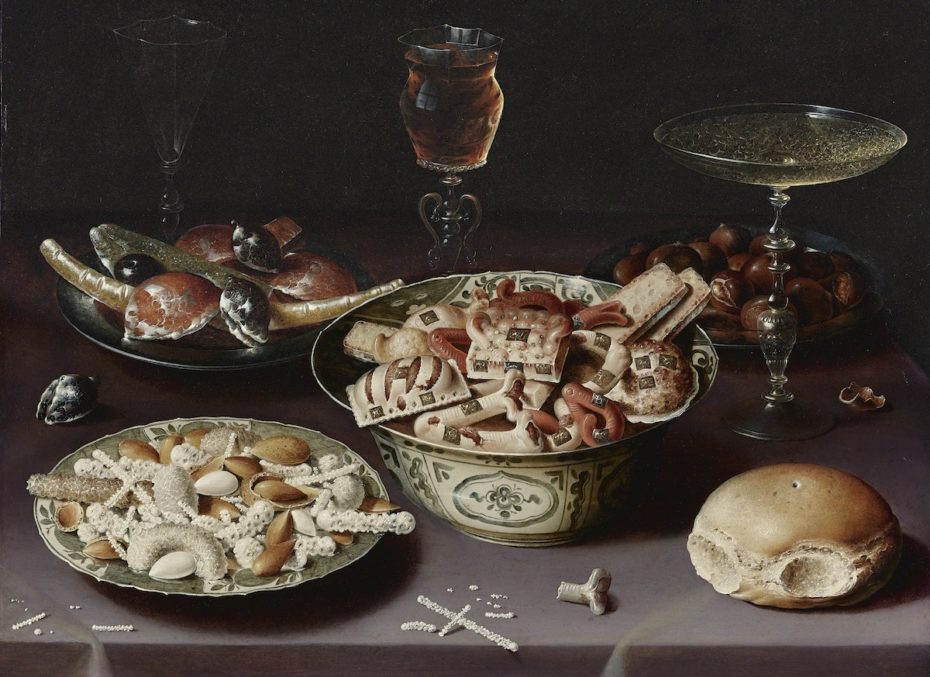
As preposterous as it may sound, a Renaissance still-life has a lot in common with our parameters for the perfect Instagram photo: both have to appear perfect with a touch of candidness. The art of the still-life also wasn’t very highly regarded, and often made as more of an accessory than a feature painting. Its integrity hinged on a kind of novelty of the trompe-l’œil technique, of “tricking the eye” through the lifelike mastery of its subject…
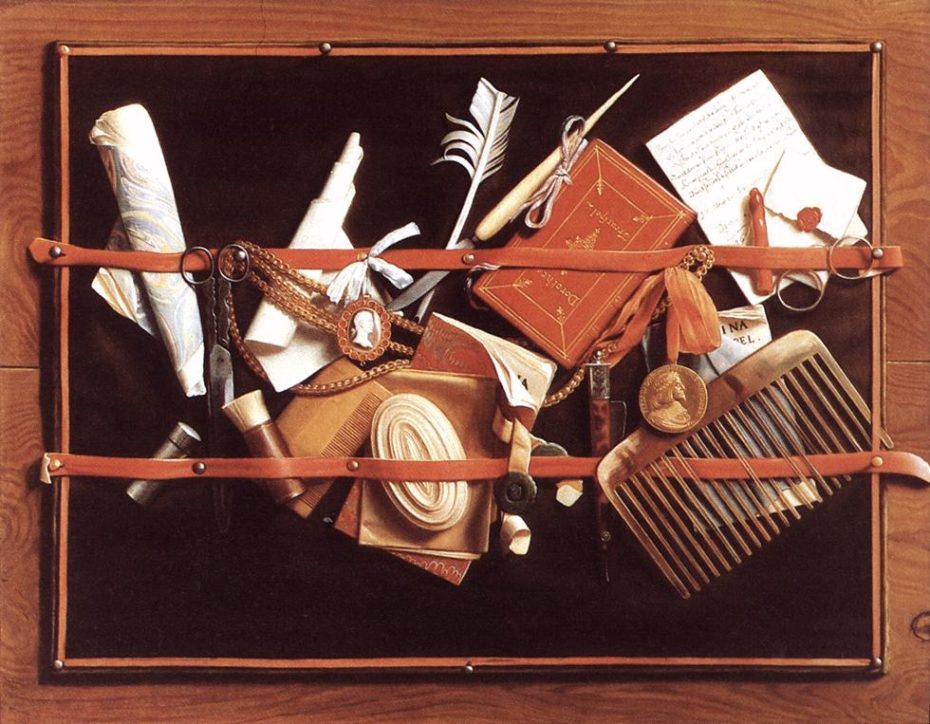
The 16th-17th century Dutch were really great at still-life, as were the Flemish, German, Italians, and even the French, whose term for it, nature morte, literally meant “Dead Nature” (same goes in Italian) while the Germans said Stillleben, or “Living Still”. A bit macabre, don’t you think?
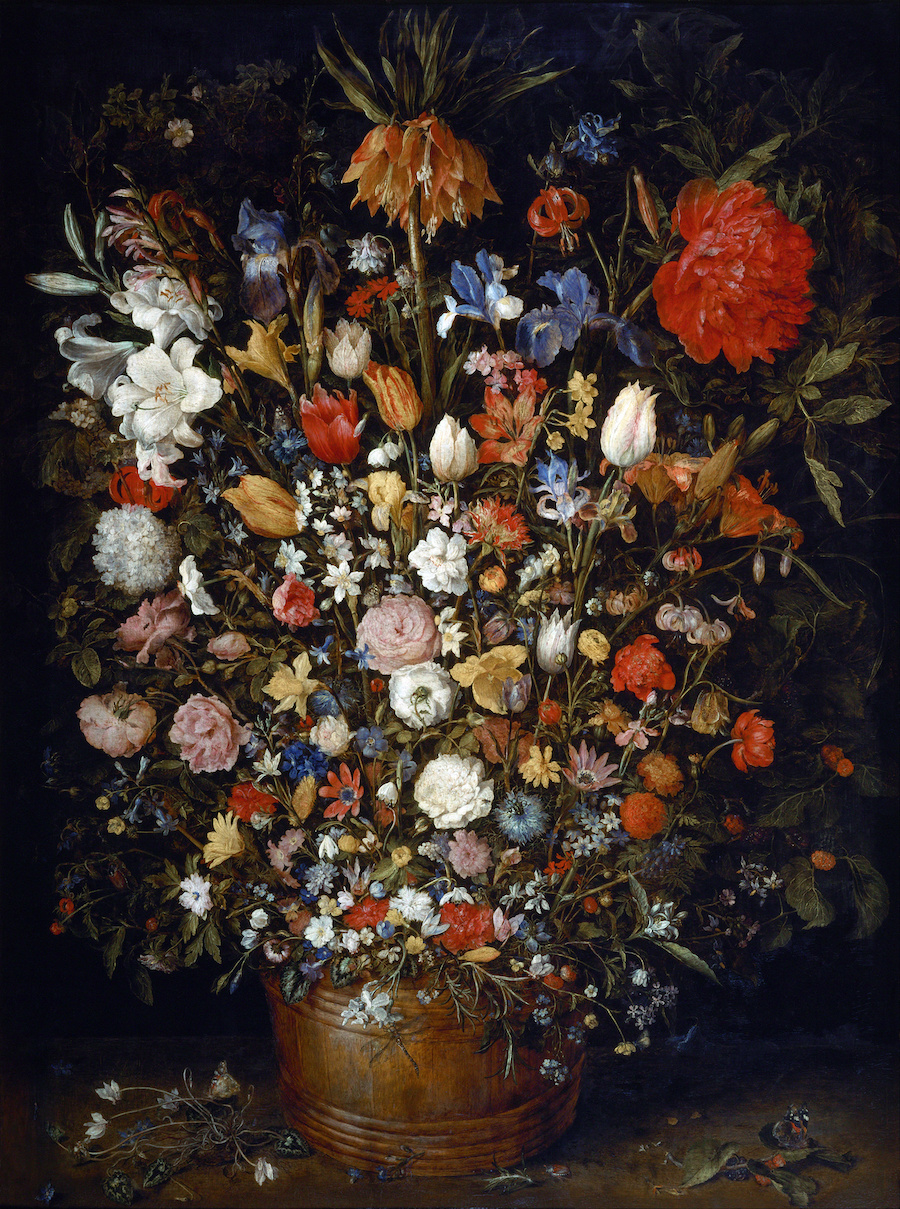
Jan Brueghel, (the son of Pieter Brueghel the Flemish guy who made those insane Renaissance paintings of people partying and throwing up on each other) became one of the more respected floral still-life artists of his time, but sadly, not many of his works remain today, while Flemish lad Osias Beert and the German Georg Flegel became the Liberaces of the still-life genre with their army of butterflies, waffles, wine and sweets (those fluffy little white things you’ll see below)…
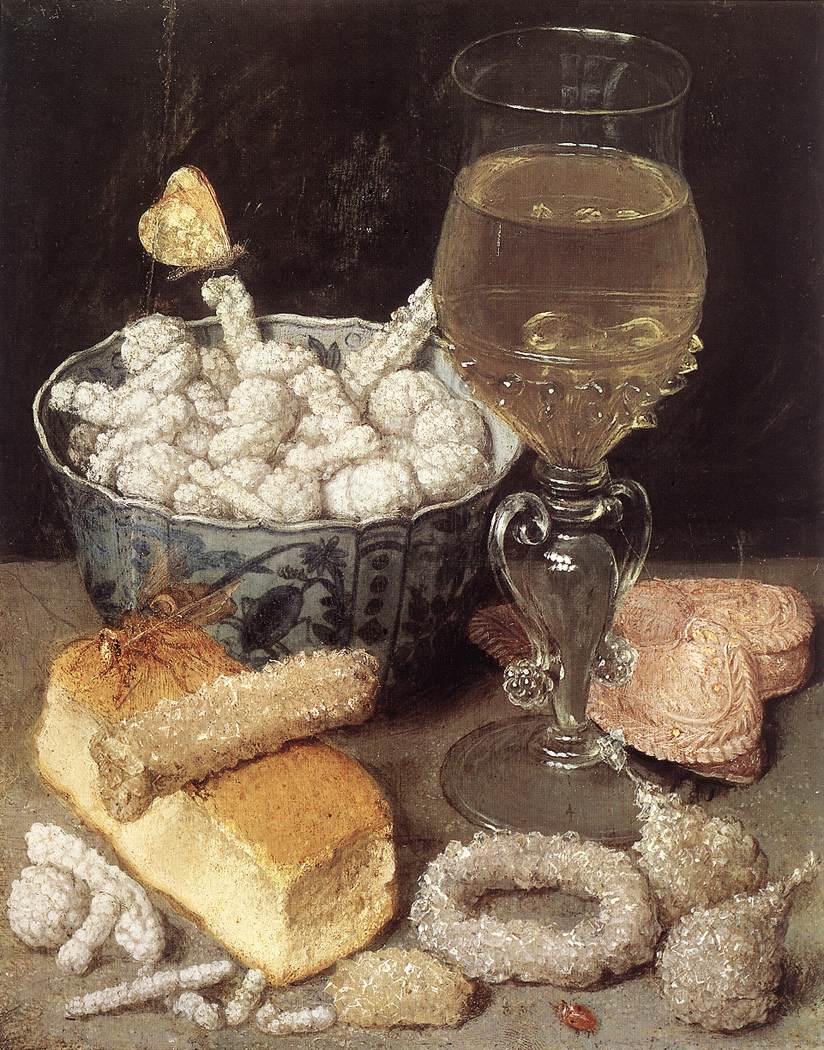
Sure, they were interesting items to paint in their own right, but things got even more interesting when the Dutch Reformed Protestant Church made it illegal to depict any religious icons in art. That meant that if an artist wanted to talk about anything to do with religion (which was pretty much the hot topic back in the day) they had to get clever. And so, everyday objects became codes for things you weren’t supposed to be talking about with a paintbrush…
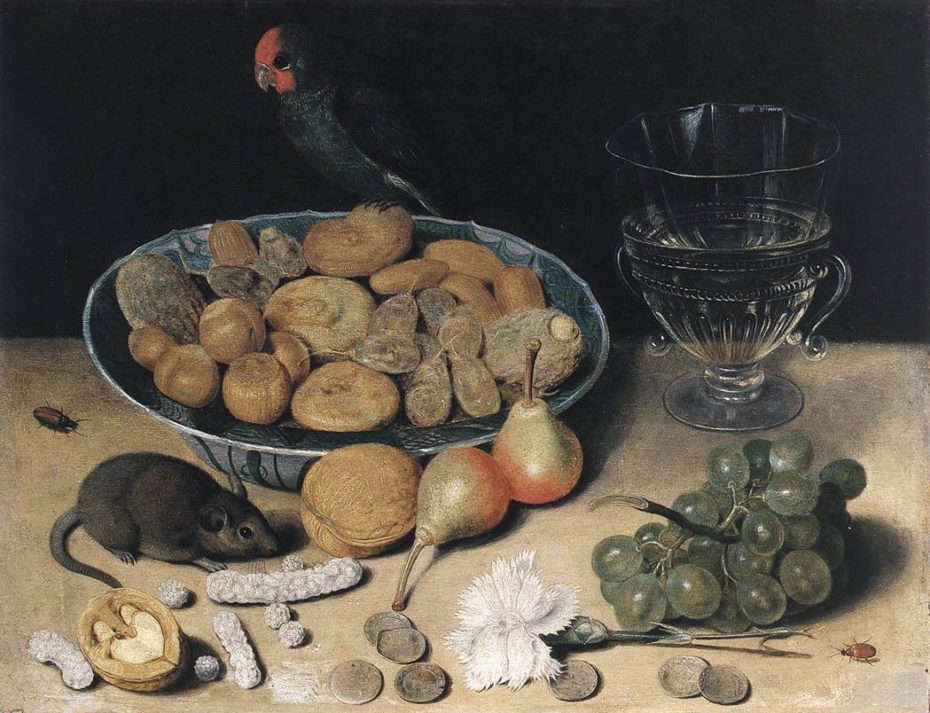
One of the most symbolically-charged paintings of the day was Dessert Still Life by Flegel, which depicted a mouse and a bird hanging out by a bunch of fruits, nuts and sweets. The woody texture of the walnut symbolised the cross, and the wine and grapes represented Holy Communion; a white flower represented Jesus, and the coins were reference to Judas’ betrayal of him for cash. The bird, a far more noble creature than the ground dwelling mouse (closer to Satan), stood guard over the holy bounty of nuts. It was basically a Bible School cheat sheet.
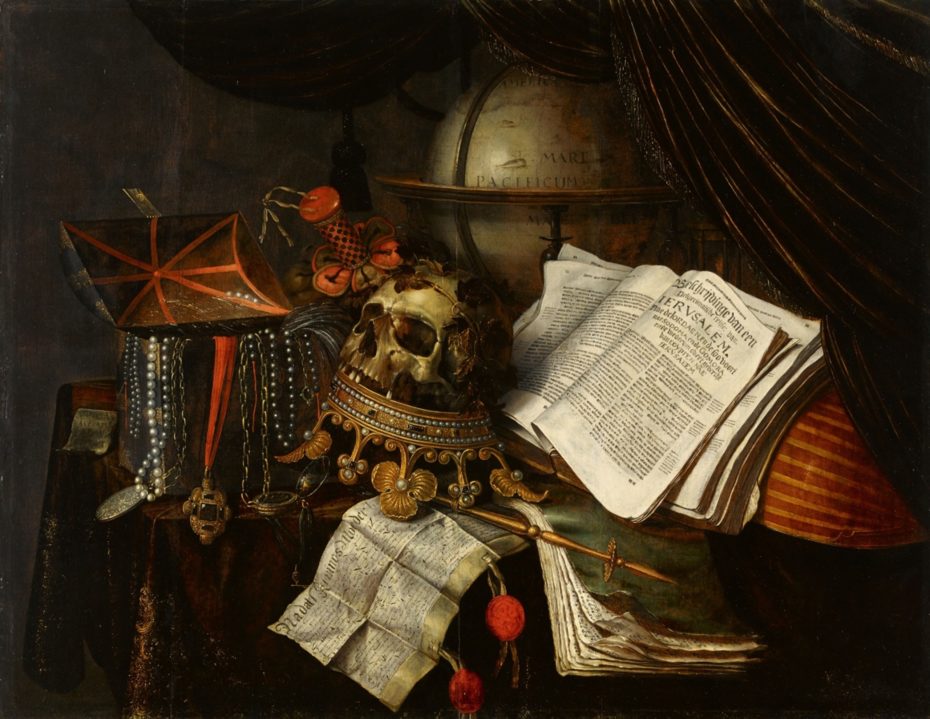
Still lives and symbolic depictions of religious concepts became particularly popular with the middle class. The secret meanings behind the paintings and their unofficial language spawned several sub-genres, including floral still life, breakfast paintings, banquet still life and our personal favourite, vanitas (which we’ll get to a little later on).
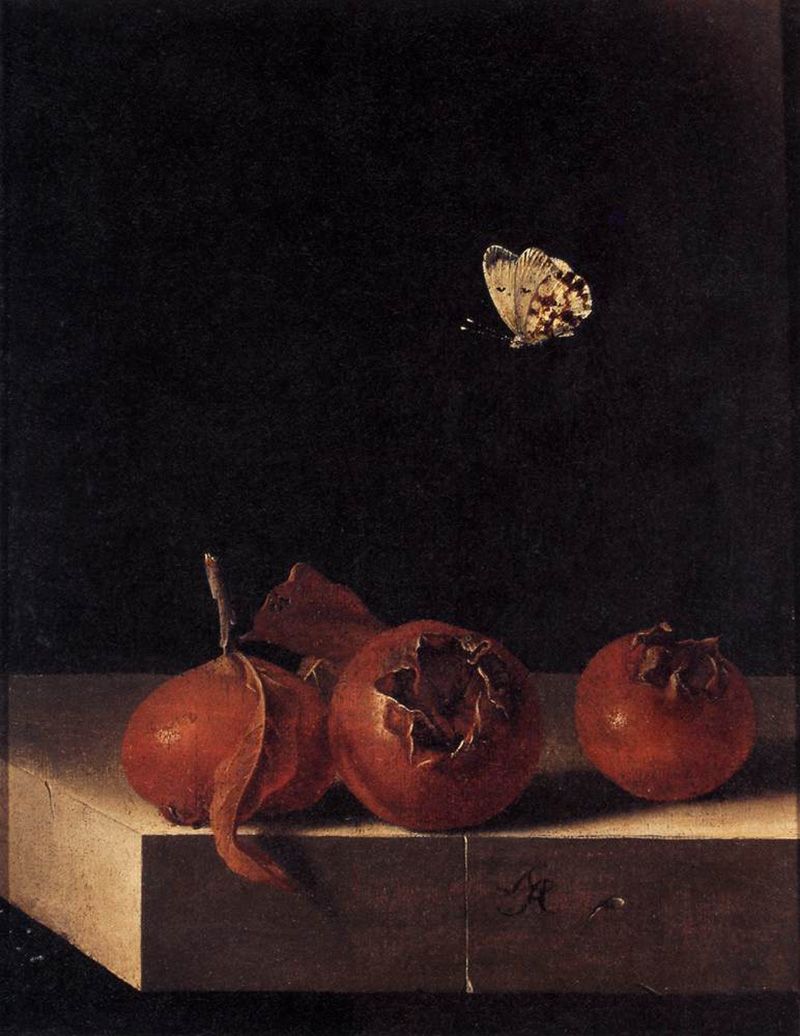
In an excellent Twitter thread by author, cartoonist (and self-proclaimed vulgarian and motormouth) C. Spike Trotman got to tweeting about “one of the most misunderstood genres in European, specifically Flemish, art” and how important it once was to know a little about the symbolism before purchasing any old still-life and hanging it in your home. While a still-life depicting a bowl of strawberries for example, might symbolise paradise and heaven, the meaning of say, an arrangement of medlar fruits is something altogether quite different…
A medlar is a fruit cultivated sine ancient times, and unusual in the respect it’s not edible raw until it’s essentially begun to rot… This rotten-before-it’s-ripe fruit is a metaphor for wantonness and prostitution; the ruination of something pure. This painting is code for “Hoes don’t go to heaven, you know.” Hang this over your bed if you’re hankerin’ for a divorce.
@Iron_Spike
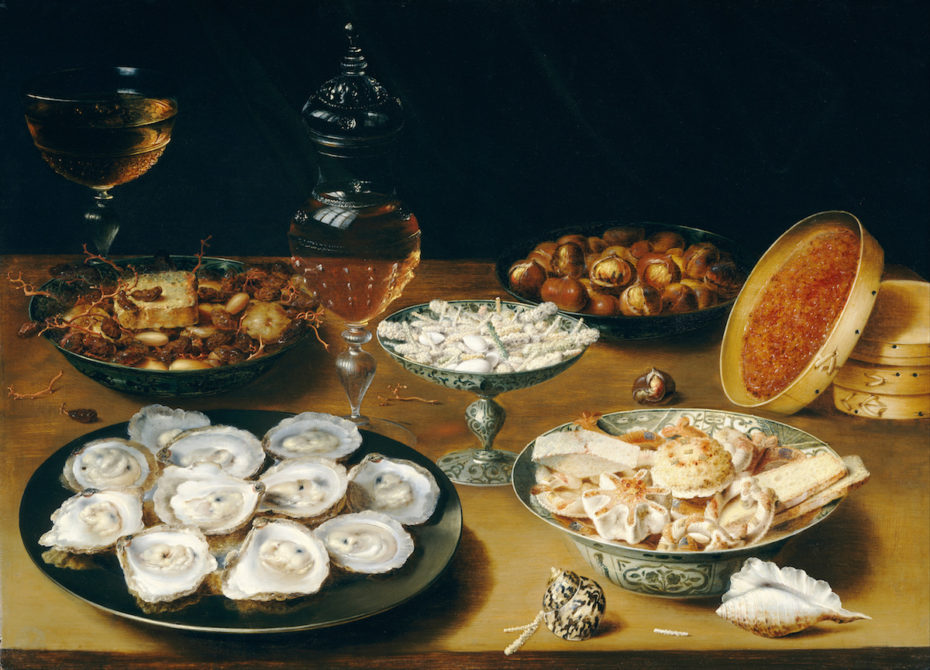
Oysters coyly toyed between an erotic and indulgently divine association — Aphrodite, after all, was conceived in an oyster shell. As Liana De Girolami Cheney explains in Artibus et Historiae, an oyster clearly painted in a domestic interior – and not on a feasting table – shifted its vibe “from feast to tryst.” Figs, plums, cherries, apples and peaches also have erotic undertones.
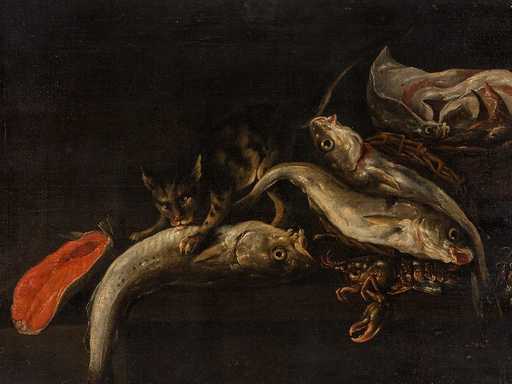
Snails symbolised immaculate conception and fish symbolised Christ, while lowly creatures feasting on old fruits usually symbolised the fleeting nature of mortality, or the ever present threat of the devil (cats in particular were great symbols of trickery).
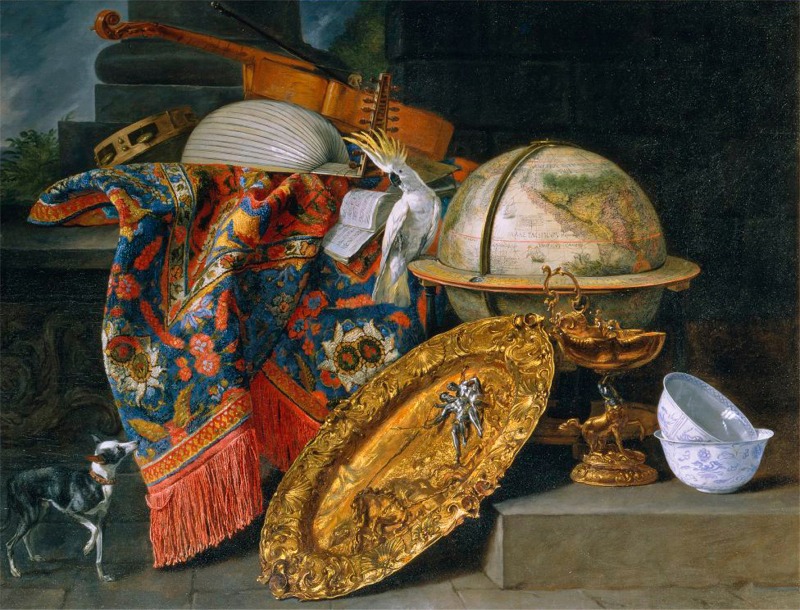
In matters of fine china and gold plates, one also had to be wary, as too much was not just tacky but sinful. A gaudy and tilted golden platter sent a strong message: too many riches will lead to ruin (think of it like a Renaissance version of Notorious BIG’s “Mo’ Money, Mo’ Problems”).
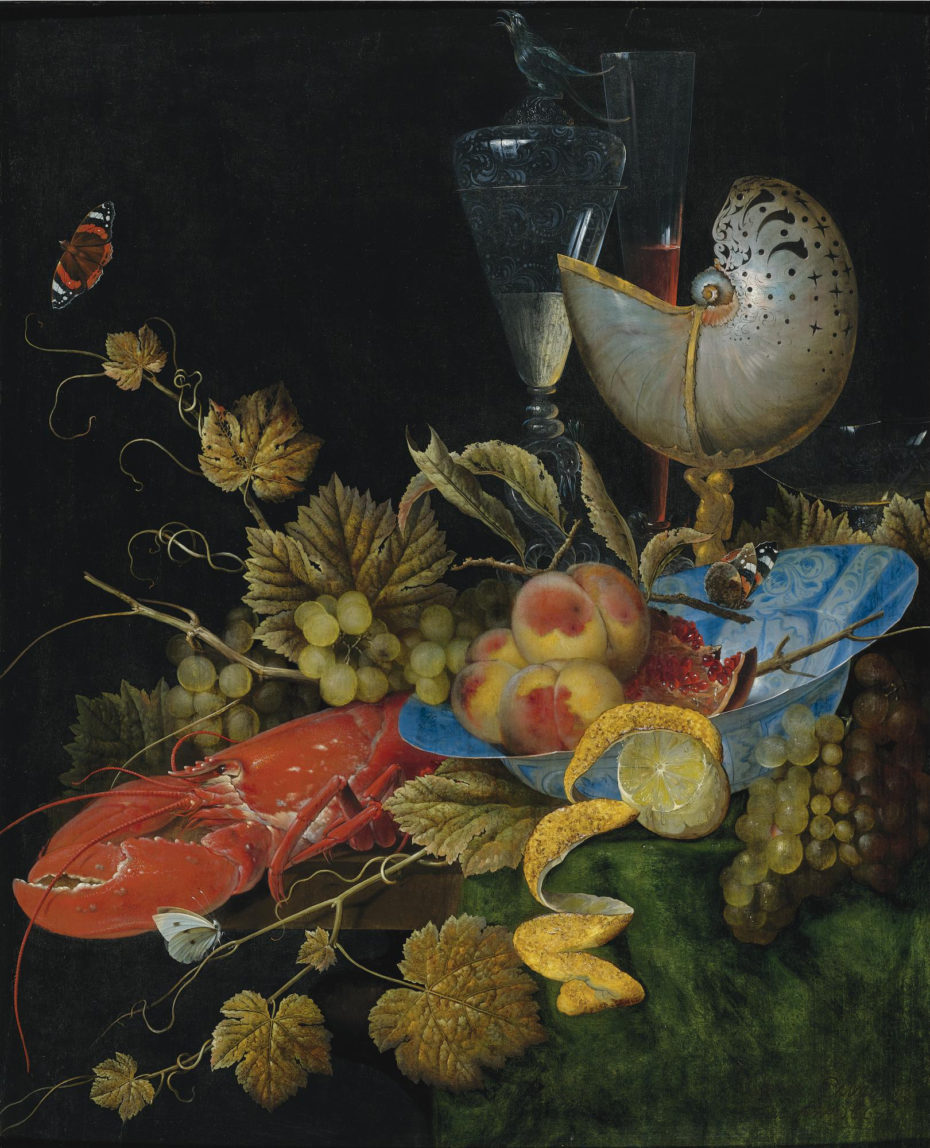
Translations for still-life symbolism could fill a small dictionary, but here are a few of our favourites to look out for…
Lobster, shellfish or meat: wealth, gluttony and temptation
Poppies or dead animals: death. Poppy is also the flower that produces opium, the character of mortal sin of laziness.
Rose: the flower of Venus, symbol of love and sex
Crown: like masks, symbolize the absence of those who wore them.
Pomegranates: fertility (a metaphor for Persephone & Hades)
Globe: the earth and the Sky
Glass: a life of luxury.
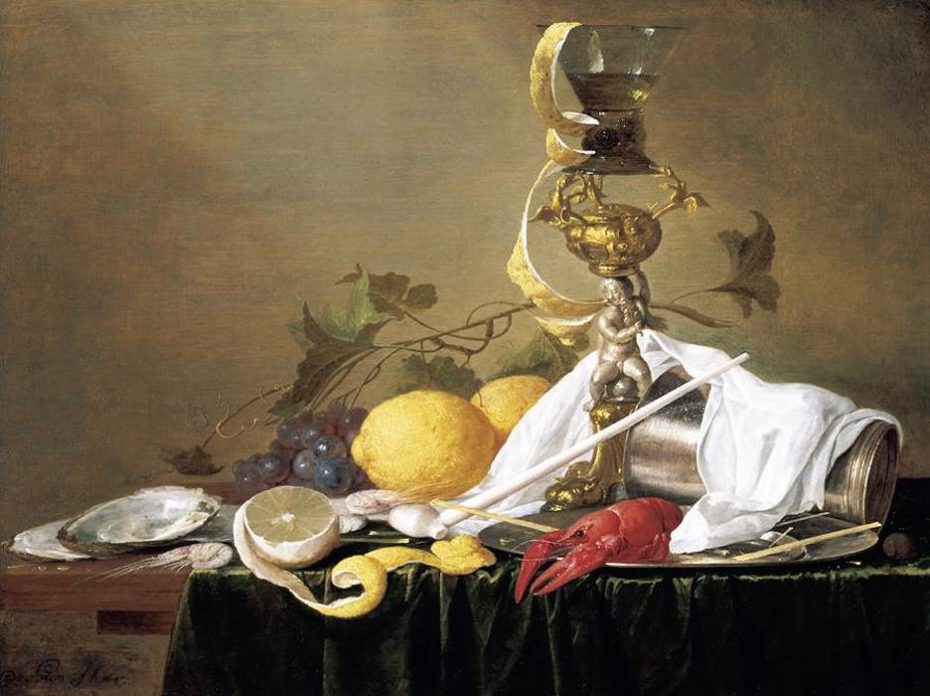
Lemons: the bittersweetness of life
Tulips: nobility
Violets: modesty
Sunflower: devotion
Peaches: good health.
Bees: industriousness or how helpless we are against the course of destiny
Bread: the body of Christ, everyday life, humility
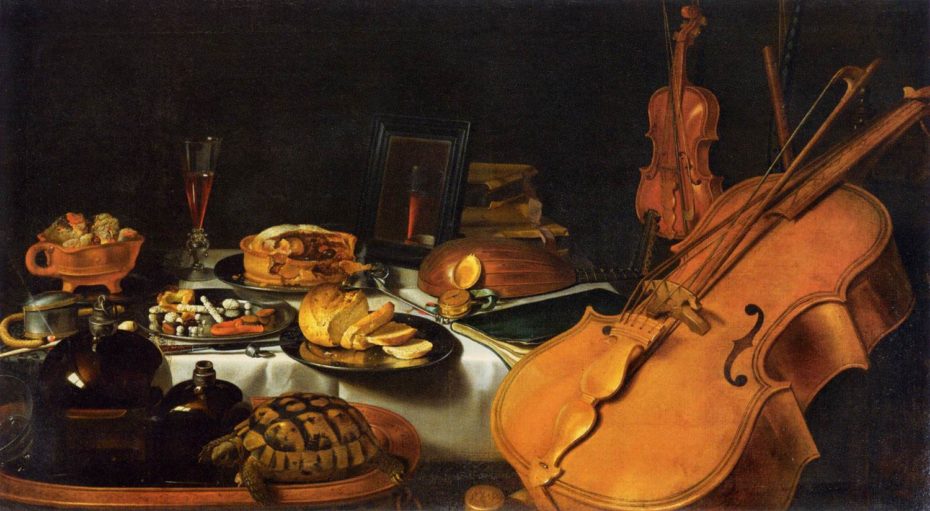
Violin: the futility of earthly existence (easily snapped strings symbolizes the broken threads of time)
Turtle: Long life. (The turtle has great longevity living up to 150 years).
Rotten fruit: a symbol of ageing
A butterfly: the resurrection of the Christ
A rose with thorns: the Virgin Mary’s suffering. A lily can also represent the Virgin Mary.
An ant: hard working
Dragonfly: (subspecies of butterfly) devilish.
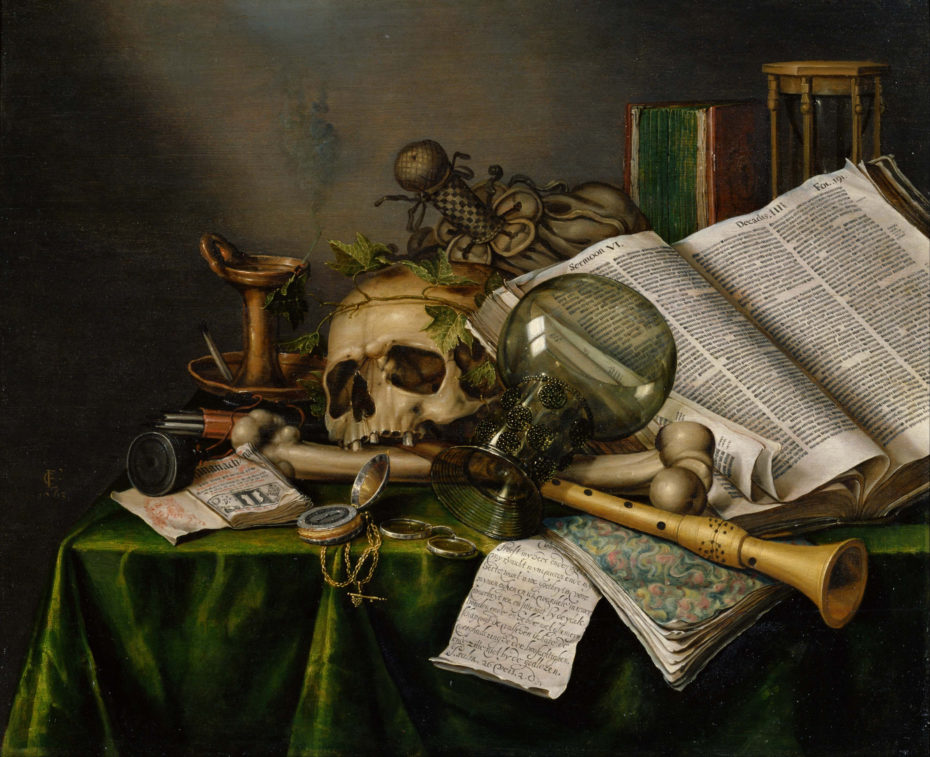
Now we come to what’s arguably the most interesting sub-genre of still-life to look at: Vanitas paintings. Common in medieval funerary art, it became popular in the 1620s and could be extremely morbid and explicit, reflecting an increased obsession with death and decay. Back to our Twitter vulgarian, @Iron_Spike:
Vanitas is Latin for empty, futile, WORTHLESS. And it’s a description of your SHORT AND POINTLESS MORTAL LIFE. Skulls, snuffed and short candles, wilting flowers, emptying hourglasses, fragile soap bubbles, toppled glasses. The symbolism is still clear, centuries later.
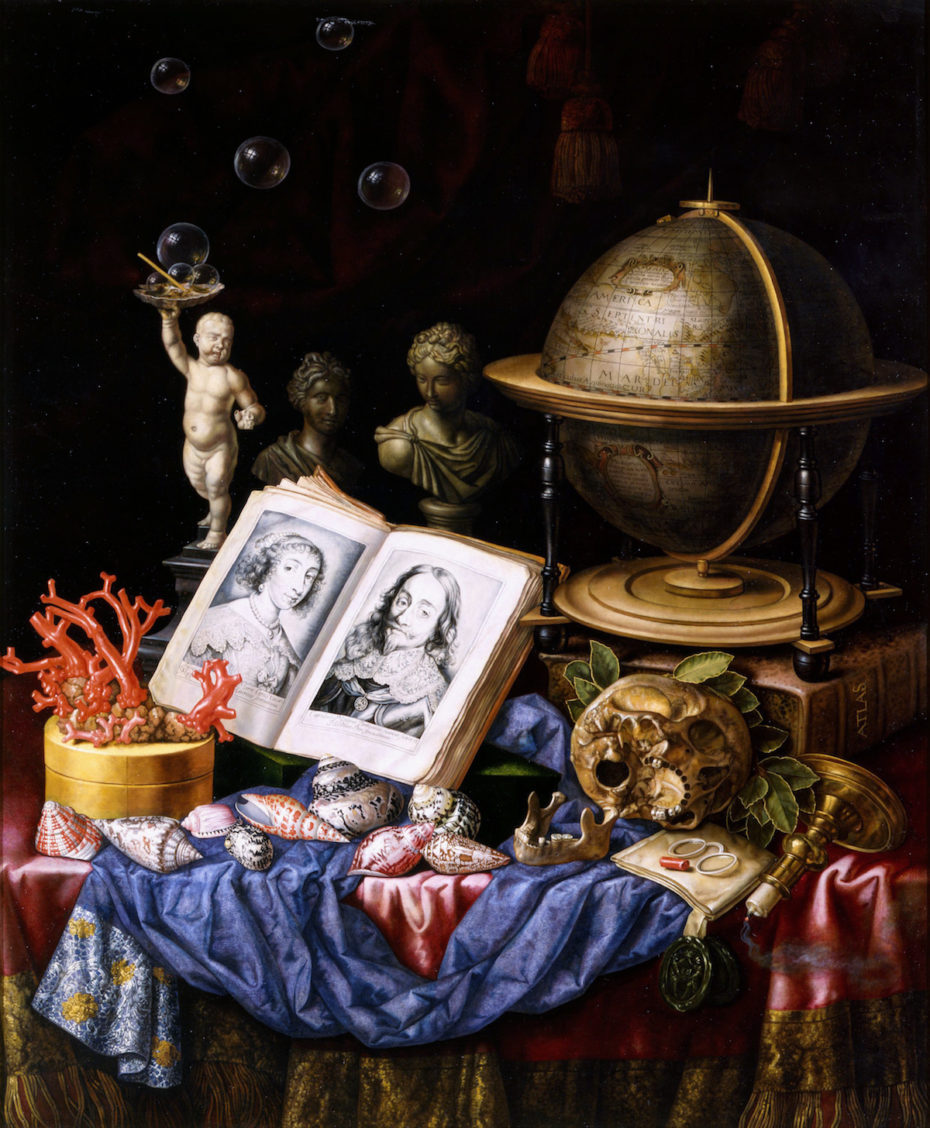
Vanitas paintings often depicted symbols of mortal wealth, accomplishment, and luxurious pleasure; playing cards, tobacco pipes, instruments, Chinese porcelain, hefty tomes. And they were often featured alongside skulls. Cuz none of it mattered. You couldn’t take it with you.
@Iron Spike
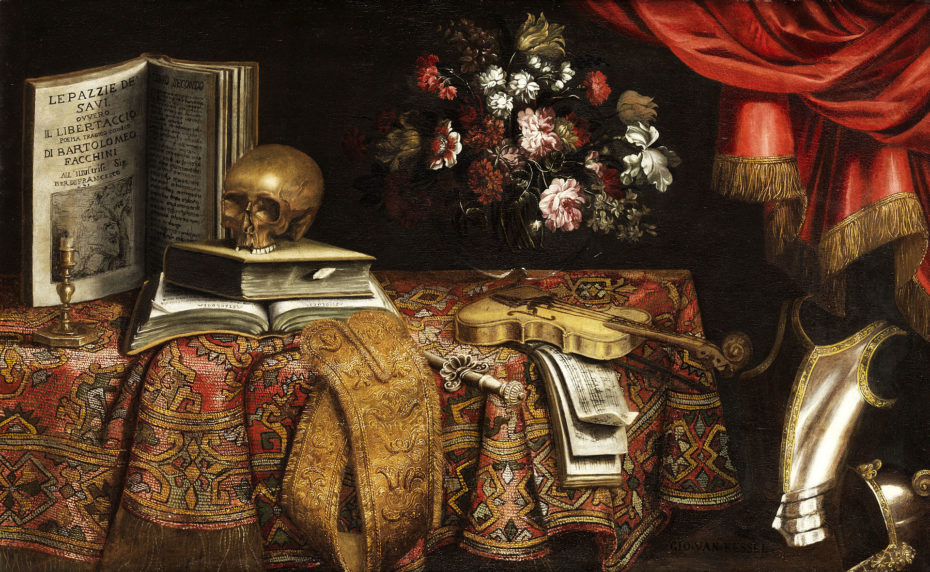
16th &17th century Dutch painters borrowed the Vanitas concept from the Romans, who used the skull in paintings as a symbol of mortality and earthly remains, often with the accompanying phrase Omnia mors aequat (Death makes all equal).
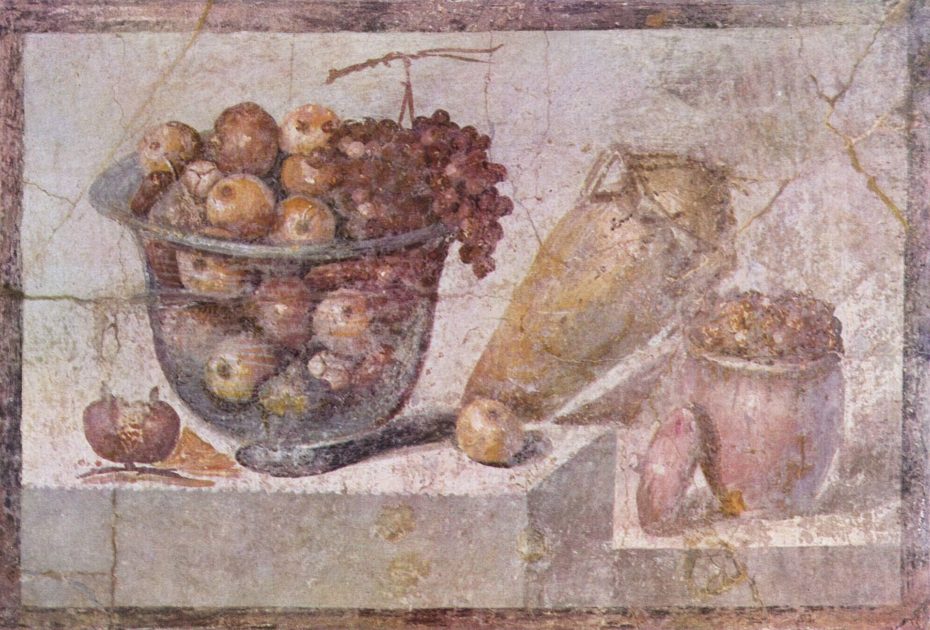
But still-life paintings go back even earlier than the Romans and were found on the interior of ancient Egyptian tombs. The Egyptians believed that banquet still-lives would become real, and the foods they depicted would feed you in the afterlife. Fast-forward about 5,000 years and two of Ancient Greece’s greatest artists, Zeuxis and Parrhasius, are said to have once competed to create the most lifelike objects, possibly making them history’s earliest trompe-l’œil painters.
In the 16th century, Spanish painter Juan Sánchez Cotán opted for a more spartan scene, removed from the theatrical 17th century Dutch still lifes. But “what could a cabbage, a cucumber, a melon and quince mean?” asks Associate Professor of Renaissance Art History, Dr. Sally Hickson:
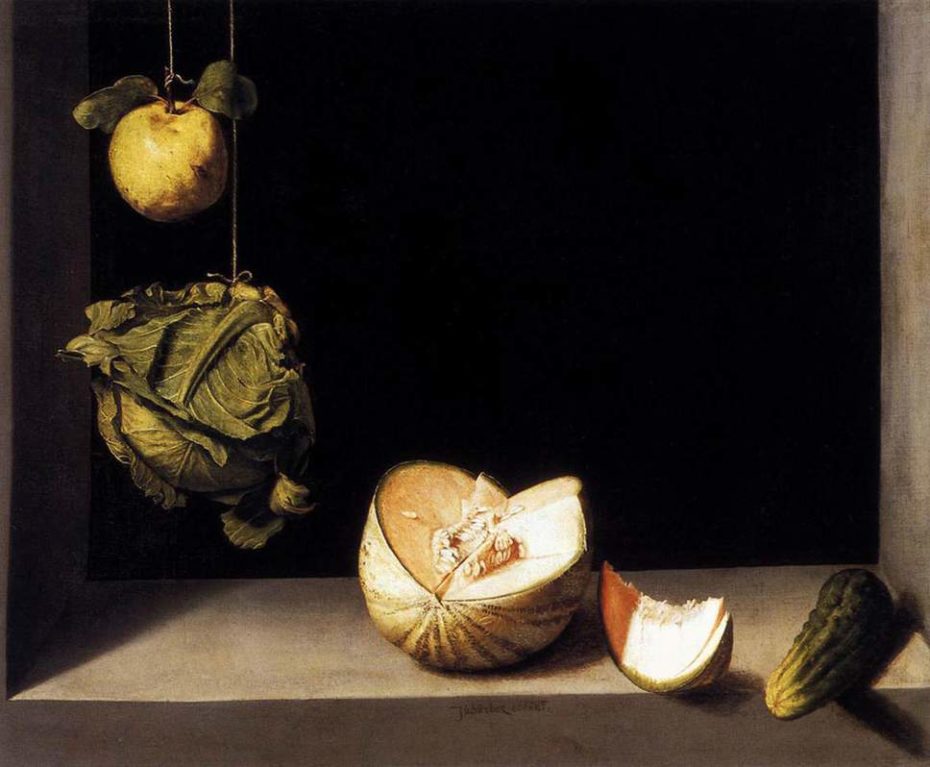
Do you notice the geometry on that sectioned melon?
“Such paintings, which were generally made for an educated, secular clientele, were perhaps understood as geometric meditations”, says Hickson. “Others have suggested that the arrangement of spheres and sectioned semi-spherical fruits and vegetables is to be understood in terms of astronomy, a representation of celestial bodies moving against the night sky, possibly in relation to celestial navigation. Spain was, of course, at the forefront of exploration in the fifteenth and sixteenth centuries.”
Hang on – still-lifes talking about astronomy before Galileo was looking through his telescope? Cool!

It was the 19th century arrival of photography that gave still-life painting its ultimate identity crisis. If people could now capture a scene without picking up a brush, what was it all for? Cezanne’s infamously wonky apples made critics slack-jawed, because they weren’t charged by religion, but a groundbreaking philosophy at the core of Impressionism: to capture fleeting perceptions. To let the irrational, and not necessarily realistic, reign.

Suddenly, fruits were less about the Garden of Eden, and more about subjectivity. Shadowing with very dark colours was given the boot, and only seven colours of the prism were used to give the fruit a more luminous effect – which is also why they look like they’re constantly floating and rolling off the table. An archaic art form was entering a new era, wherein masters like Picasso, Matisse, and Dali would continue to push the boundaries of our comfort zone with still-lifes that had no dimension or too much; scenes that made homage to the art form’s past, but also took us to new, imaginary places.
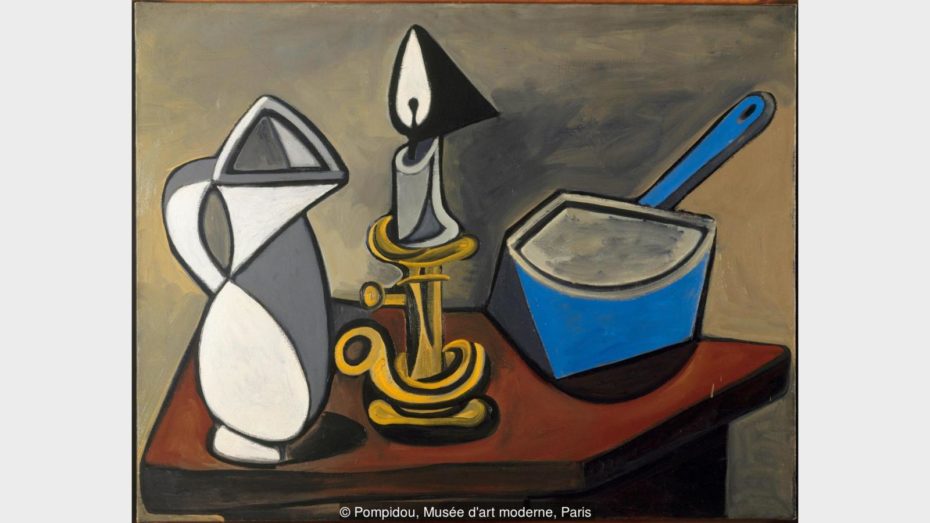
“When the avant-garde adapted the theme it changed everything,” Curator, and doctor in Art History Ángel Aterido told the BBC. “Critics finally began to take notice”.
And that, just about concludes our little crash-course on still-lifes, in the hopes that when next you find yourself being dragged unwillingly around a museum of medieval art, you’ll be in on the secret. One last tip from our Twitter motormouth Iron_Spike (and we highly recommend taking a moment to read that Twitter thread).
“If the still life you’re looking at contains a reflective metal, examine it closely. There might be a self-portrait of the artist in there.”




